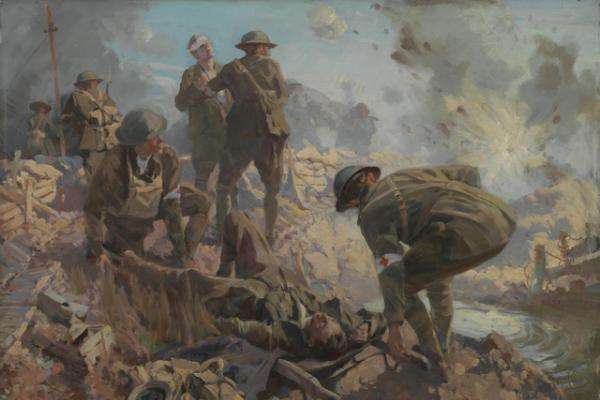The Pockley family
Twenty-four year old Brian Pockley was working as a medical practitioner at Sydney Hospital when war was declared in August 1914. Without hesitation, he volunteered for the Australian Army Medical Corps (AAMC) and shortly afterwards found himself en route to Papua New Guinea as part of the Australian Naval and Military Expeditionary Force (AN&MEF) that had been raised just days after war was declared.
Studio portrait of Captain Brian Colden Antill Pockley, 1914. (AWM P11224.001)
Britain and Germany both held territories in the south-west Pacific. Papua New Guinea shared a border that divided it into two separate colonies, one British and the other German. With warships from the German East Asiatic Cruiser Squadron patrolling nearby, Australia found that the enemy was on its doorstep.
The AN&MEF was ordered to destroy Germany’s wireless stations in the region. At dawn on 11 September, the 1,500-strong force approached New Britain and Brian went ashore with a party of naval reservists. German troops stationed on the island were prepared for the attack and a series of skirmishes along the Bitapaka Road ensued.
As he approached the first German position, Brian heard that Able Seaman William Williams had been shot in the stomach and set out to find him. Brian discovered that Williams needed urgent medical attention and ordered Leading Stoker Kember to take him back. Brian tied his Red Cross armband onto Kember’s helmet in the hope that German troops would respect the symbol of the Red Cross and allow Williams to be carried to safety.
Brian returned to the fighting without his Red Cross armband and was shot soon afterwards. Both wounded men died that afternoon.
Studio portrait of 2nd Lieutenant John Graham Antill Pockley, 1915. (AWM H19317)
Brian’s younger brother, John, had been a farmer living with his wife, Nancy, in Yarran Springs when the First World War began. Although Nancy had recently given birth to a son, John enlisted for service just months after Brian was killed in action. Like his older brother, John served with the AAMC and worked on hospital transport ships before being sent to the Western Front.
As spring arrived in early 1918, Germany launched a huge offensive on the Somme. John was on the frontline near Villers-Bretonneux on 30 March when he was wounded by machine-gun fire. Stretcher-bearers offered their assistance, but John told them to take another man he believed was suffering more than him. By the time they returned, John was dead.
John was buried nearby, but despite his family’s desperate enquiries his grave could not be located after the Armistice. He is remembered on the Villers–Bretonneux Memorial in France, along with nearly 11,000 other Australian soldiers who have no known grave.
Brian and John were among over 2,800 sets of two brothers who both lost their lives in the First World War. Their nephew, John Antill Pockley, served as an eye surgeon with the 2/9 Australian General Field Hospital in New Guinea during the Second World War.


